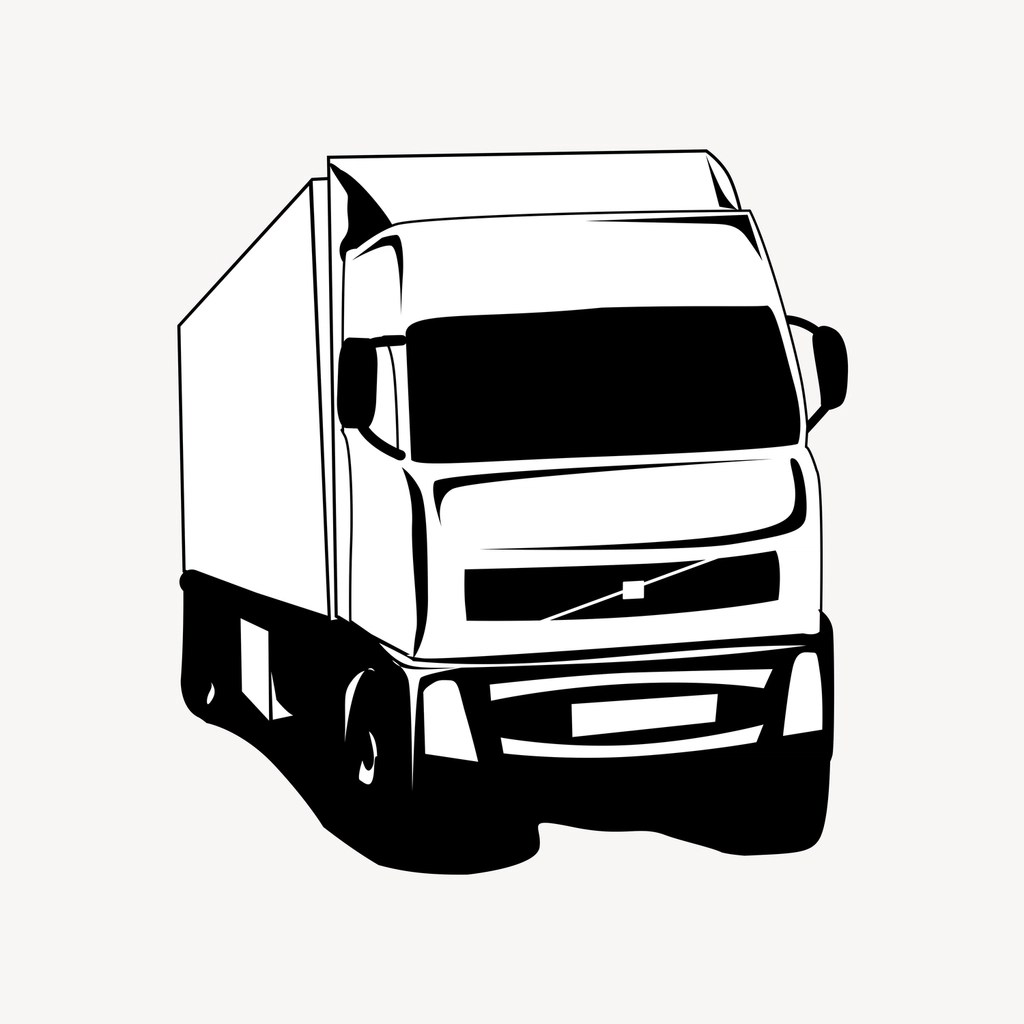
Introduction: The Road to Trucking Success
Are you considering starting your own trucking company? Do you dream of hitting the open road and building a successful business in the transportation industry?
If so, you’ve come to the right place. In this comprehensive guide, we will walk you through the essential steps to launch a thriving trucking company. From writing a solid business plan to obtaining the necessary licenses and permits, we’ve got you covered.
By following these steps and leveraging valuable insights, you can turn your trucking aspirations into a reality.
So buckle up and get ready to embark on the journey of a lifetime in the world of trucking entrepreneurship.

Step 1: Write a Business Plan
Setting the Foundation for Success
Before embarking on your trucking journey, it’s essential to lay a solid foundation with a well-crafted business plan.
This roadmap will guide you through the intricacies of the industry, outlining your goals, strategies, and financial projections.
Think of it as the blueprint for your success, providing clarity and direction as you navigate the competitive landscape of trucking.
Mapping Out Your Goals and Strategies
Within your business plan, you’ll define your mission statement, objectives, and the specific services your company will offer. Are you focusing on long-haul, regional, or specialized transportation?
Understanding your niche and target market is key to carving out a unique place in the industry.
Conducting thorough market research will help identify your competitors, target customers, and market trends, setting you up for success in a crowded field.
Navigating the Operational Landscape
Once you’ve outlined your services and market strategy, it’s time to dive into the operational aspects of your trucking business.
Define the types of freight you’ll transport, your service areas, and how you’ll manage your fleet. Are you leveraging technology for efficient logistics?
Planning these operational details in your business plan will ensure a smooth start and sustainable growth as you navigate the complexities of the transportation industry.
Financial Projections and Growth Opportunities
A crucial component of your business plan is forecasting your financial projections.
By mapping out your revenue, expenses, and profit margins, you’ll gain a clear understanding of your financial landscape.
This insight will not only help you secure funding but also guide your growth strategies. With a well-defined business plan in hand, you’ll be well-prepared to tackle the financial challenges and opportunities that come with running a successful trucking company.

Step 2: Obtain the Necessary Licenses and Permits
When it comes to starting a trucking company, obtaining the necessary licenses and permits is a critical step that cannot be overlooked.
These legal requirements are essential for ensuring your business operates smoothly and within the parameters of the law.
From obtaining a Commercial Driver’s License (CDL) to securing proper insurance coverage.
Here are the key licenses and permits you need to consider:
- Commercial Driver’s License (CDL): A must-have for yourself or any drivers you hire, this license requires passing written and practical exams to demonstrate your skills and knowledge.
- Motor Carrier Authority: This involves creating a unique business name, obtaining a Motor Carrier Number (MC#) for interstate commerce, and designating process agents for legal representation.
- Trucking Insurance: Protect your business with appropriate insurance coverage that safeguards against potential losses and liabilities associated with commercial vehicles.
- DOT Number: Comply with federal regulations by obtaining a Department of Transportation (DOT) number for your trucking business.
Navigating the world of licenses and permits can seem overwhelming, but with a clear roadmap and understanding of the requirements, you can ensure your trucking company is on the right track.
Remember to research and comply with all necessary regulations to avoid any legal issues down the road.
By taking the time to obtain the proper licenses and permits, you are setting your business up for success and demonstrating your commitment to operating a reputable and compliant trucking company.
So, buckle up and dive into the process with confidence, knowing that you are laying a solid foundation for your trucking venture.

Step 3: Financial Considerations
When starting your own trucking company, financial considerations play a crucial role in the success of your business. To ensure a solid financial foundation, it is essential to carefully plan and manage your finances.
Firstly, open a dedicated business bank account to streamline financial transactions and separate personal and company funds.
This segregation is vital for accurate financial record-keeping and simplifying tax filing processes.
Start-up Cost
In addition, determining the startup costs is imperative, as they can vary depending on equipment ownership and other factors.
Explore different funding options, such as loans, grants, or financing, to secure the necessary capital for your trucking venture.
Secondly, assessing the equipment costs is a key aspect of starting a trucking company. Depending on the type of freight you plan to transport, you must select the appropriate truck and trailer that meets your needs.
Consider factors such as price, cab style, weight limit, and cargo suitability when making equipment decisions.
Insurance Coverage
Moreover, obtaining the right insurance coverage is essential to protect your business against potential losses associated with commercial vehicles.
While the minimum required liability insurance is $750,000, most brokers prefer coverage of $1 million or more for added protection.
Prioritize insurance as a critical financial consideration to safeguard your assets and operations.
Furthermore, establishing a solid financial structure is vital for the long-term sustainability of your trucking business.
By opening a dedicated business bank account and accurately estimating startup costs, you can better manage your finances and track expenses effectively.
Consider seeking financial advice from experts in the industry to make informed decisions regarding funding, equipment costs, and insurance coverage.
Remember that sound financial planning is the backbone of a successful trucking company, allowing you to navigate the challenges of the industry and seize opportunities for growth and profitability.
Stay proactive and vigilant in managing your finances to drive your trucking business towards prosperity and success.
Make sure you go to our “How To Start A Successful Business” page to get more detailed business start up instructions.

Step 4: Finding Freight and Establishing Relationships
As a budding trucking entrepreneur, one of the critical steps in building a successful company is finding reliable sources of freight and establishing strong relationships within the industry.
Securing a steady flow of loads is essential for maintaining revenue and sustaining your business over the long haul.
Load boards, such as the popular platform offered by DAT, can be a valuable resource for accessing real-time information on available loads and booking them efficiently.
By leveraging these online tools, you can streamline the process of finding freight and keeping your trucks on the move.
Establishing Solid Relationships with Freight Brokers
In addition to online load boards, establishing solid relationships with freight brokers can be a game-changer for your trucking company.
Building trust and rapport with reputable brokers can lead to consistent and lucrative freight opportunities.
By nurturing these connections, you can access a network of reliable partners who understand your business needs and can provide a reliable source of loads.
Cultivating these relationships is key to establishing a strong foundation for your trucking business and ensuring a consistent flow of revenue.
For trucking companies looking to optimize cash flow and improve financial stability, freight factoring services can offer a practical solution.
Freight factoring allows you to receive advances on invoice payments, providing quick access to operating capital to cover expenses and grow your business.
Keith J. Leigh
By partnering with a reputable factoring company, you can effectively manage cash flow fluctuations and maintain financial stability while focusing on expanding your operations and meeting customer demands.
To streamline fuel expenses and manage operational costs more efficiently, consider utilizing fuel cards tailored to the trucking industry.
These specialized cards can provide discounts on fuel purchases, track expenses, and simplify the process of managing fuel costs for your fleet.
Primal Mogul
By implementing fuel cards as part of your financial strategy, you can maximize savings, improve budgeting accuracy, and optimize fuel efficiency for your trucks, ultimately enhancing the overall profitability of your trucking company.

Step 5: Acquiring and Maintaining Equipment
Assessing Your Equipment Needs
Before hitting the road, it’s crucial to assess your equipment needs based on the type of freight you’ll be transporting. Consider factors such as price, weight limit, and suitability for the cargo.
Whether you opt for new or used equipment, make sure it meets industry standards and regulations to ensure safe and efficient operations.
Remember, your equipment is the backbone of your trucking business, so choose wisely.
Budgeting for Equipment Costs
Acquiring trucks and trailers can be a significant expense when starting a trucking company. Take the time to carefully budget for these costs while considering your financing options.
Whether you choose to purchase or lease equipment, factor in maintenance and repair expenses to prevent unexpected financial burdens.
By planning ahead and being strategic with your equipment investments, you can set your business up for long-term success.
Establishing Maintenance Protocols
Maintaining your equipment is essential for keeping your fleet in top condition and ensuring the safety of your drivers and cargo.
Develop regular maintenance protocols to address issues promptly and prevent breakdowns on the road.
Consider creating a maintenance schedule, conducting routine inspections, and investing in quality parts and servicing. By prioritizing equipment maintenance, you can minimize downtime and maximize productivity.
Investing in Technology and Safety Features
In today’s digital age, technology plays a crucial role in the trucking industry. Consider investing in modern tools and safety features to enhance efficiency and driver safety.
From GPS tracking systems to collision avoidance technology, these advancements can improve fleet management and reduce the risk of accidents.
Stay informed about the latest innovations in trucking technology and be proactive in implementing solutions that benefit your company and drivers.
Prioritizing Equipment Upgrades
As your trucking company grows, it’s important to stay ahead of the curve by prioritizing equipment upgrades.
Evaluate your fleet regularly and identify opportunities to improve performance, fuel efficiency, and overall safety.
Whether it’s investing in newer models, upgrading to eco-friendly vehicles, or implementing telematics systems, staying proactive in upgrading your equipment can set you apart in the competitive trucking industry.
By continuously improving your fleet, you can enhance your company’s reputation and attract new opportunities for growth.
You can also go to our ‘Auto Superstore’ primalstock.com to purchase some ‘Trucking Equipment’

Step 6: Hiring and Training Drivers
When it comes to building a successful trucking company, hiring and training drivers is a crucial step that should not be overlooked.
Your drivers are the face of your business on the road, representing your company’s values and commitment to safety and professionalism.
Here are some key considerations when it comes to hiring and training drivers:
- Driver Qualifications: Look for drivers who possess a valid Commercial Driver’s License (CDL) and have a clean driving record. Prioritize candidates with experience in long-haul or specialized transportation, as they will be better equipped to handle the demands of the job.
- Safety Training: Implement a comprehensive safety training program to ensure that all drivers are well-versed in best practices for safe driving, load securement, and emergency procedures. Emphasize the importance of following all regulatory requirements and company policies.
- Continuous Education: Encourage ongoing education and training for your drivers to stay up-to-date on industry trends, regulations, and safety protocols. Provide opportunities for professional development and certification programs to enhance their skills and knowledge.
- Culture Fit: Consider the cultural fit of potential drivers within your company. Look for individuals who align with your company values, work ethic, and commitment to customer service. A cohesive team of drivers who share a common vision can help foster a positive work environment and drive success.
By investing in the hiring and training process for your drivers. You are not only ensuring the safety and efficiency of your operations. But also cultivating a strong team that reflects the professionalism and dedication of your trucking company.
Remember, your drivers are the backbone of your business. So selecting and nurturing the right talent is key to building a reputable and successful trucking company.
Prioritize thorough vetting, ongoing training, and fostering a positive company culture to set your drivers up for success on the road.

Step 7: Implementing Safety and Compliance Measures
Ensuring the safety of your drivers, cargo, and other road users is paramount in the trucking industry. Implementing robust safety and compliance measures is not just a legal requirement but also a moral obligation.
From conducting regular vehicle maintenance checks to adhering to hours of service regulations. Every aspect of your operations should prioritize safety above all else.
By investing in proper training for your drivers and enforcing strict adherence to regulations. You can mitigate risks and protect your reputation as a responsible trucking company.
One key aspect of safety and compliance is staying up to date with industry regulations and best practices.
The trucking industry is heavily regulated, with rules governing everything from driver qualifications to vehicle maintenance standards.
By staying informed about these regulations and implementing them diligently, you can avoid costly fines, penalties, and even potential accidents.
Regularly reviewing and updating your safety protocols ensures that your company remains in compliance with the latest industry standards. Safeguarding your business and reputation.
Regulatory Compliance
In addition to regulatory compliance, implementing safety measures within your company culture is crucial. Encouraging a culture of safety among your drivers and staff can lead to a more conscientious and vigilant workforce.
Emphasizing the importance of reporting safety concerns, conducting regular safety training sessions, and rewarding safe driving practices can create a positive safety culture within your organization.
By making safety a top priority at every level of your company. You can instill a sense of responsibility and accountability among your team members.
Another important aspect of safety and compliance is the use of technology to enhance safety measures. Investing in telematics systems, dash cams, tool chess, and electronic logging devices can provide real-time data on driver behavior, vehicle performance, and compliance with regulations.
These technological tools not only improve safety but also streamline operations, reduce costs, and increase efficiency. Leveraging technology to monitor and track safety metrics can help you identify potential risks proactively and take corrective action before they escalate.
Conclusion: Safety and Compliance
In conclusion, implementing safety and compliance measures is a non-negotiable aspect of running a successful trucking company.
By prioritizing safety in all aspects of your operations. Staying informed about regulations, fostering a culture of safety, and leveraging technology. You can create a secure and efficient work environment.
Remember, safety is not just a legal obligation but a commitment to protecting your drivers, cargo, and the reputation of your company. By making safety a core value of your organization. You can pave the way for long-term success in the competitive world of trucking.

Step 8: Marketing and Branding Your Trucking Company
When it comes to marketing and branding your trucking company, establishing a strong presence in the industry is key.
Start by defining your unique selling proposition (USP) – what sets your company apart from competitors.
Highlight your strengths, whether it’s exceptional customer service, reliability, or specialized transportation services. Develop a compelling brand identity that resonates with your target audience.
This includes creating a memorable logo. Choosing a distinct color scheme, and crafting a compelling brand message that communicates your company’s values and mission.
In today’s digital age, having a strong online presence is essential for attracting and engaging customers. Build a professional website that showcases your services, fleet, and customer testimonials.
Optimize your website for search engines (SEO) to increase visibility and attract organic traffic. Utilize social media platforms like LinkedIn, Facebook, and Instagram to connect with potential customers. Share industry insights, and promote your services.
Engage with your audience through regular posts, updates, and interactive content to build brand loyalty and credibility.
Networking plays a crucial role in marketing your trucking business. Attend industry events, trade shows, and conferences to connect with potential customers, industry partners, and other trucking professionals.
Industry Associations and Organizations
Join industry associations and organizations to expand your network and stay informed about industry trends and regulations.
Collaborate with other businesses, such as logistics companies or freight brokers, to explore partnership opportunities and expand your reach.
By building strong relationships and a solid reputation in the industry. You can attract more business and establish your trucking company as a trusted player in the market.
Invest in marketing strategies that align with your target audience and business goals.
Consider advertising in industry publications, participating in targeted email campaigns, or sponsoring industry events to increase brand awareness.
Track the performance of your marketing efforts through analytics and customer feedback to refine your strategies and maximize ROI.
By implementing a comprehensive marketing and branding strategy. You can differentiate your trucking company from competitors, attract new customers, and build a strong, recognizable brand in the industry.

Step 9: Managing Operations and Logistics
Managing operations and logistics is the final piece of the puzzle when it comes to running a successful trucking company.
This step involves coordinating all aspects of your business, from scheduling deliveries to maintaining your fleet.
By implementing efficient processes and staying organized, you can ensure that your operations run smoothly and your customers are satisfied.
In conclusion, starting a trucking company requires careful planning, hard work, and dedication.
By following the steps outlined in this guide, you can set yourself up for success in the competitive transportation industry. From writing a solid business plan to managing operations effectively. Each step plays a crucial role in the overall success of your trucking company.
So, buckle up, stay focused, and get ready to turn your trucking dreams into a profitable reality.
The open road awaits – are you ready to take the wheel?
You can go to our ‘Auto Superstore‘ primalstock.com to purchase some ‘Trucking Equipment’ & much more.
Primal Mogul












